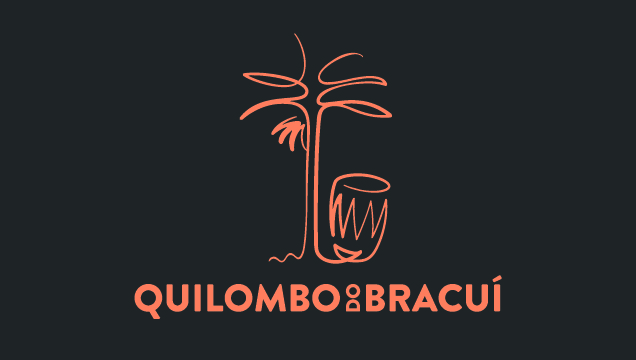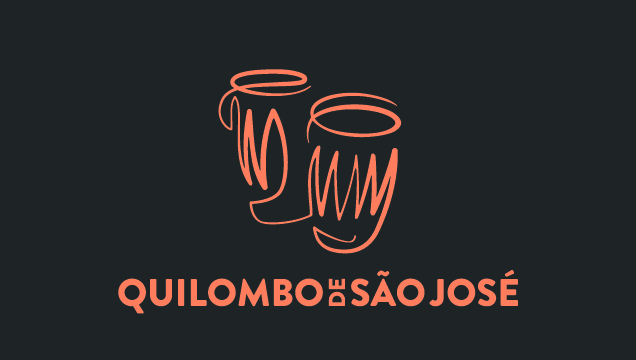PROJECT
The Atlantic trade of enslaved Africans to the Americas is considered by the United Nations as a crime against humanity. The State of Brazil, created in 1822, was directly responsible in this process: from the horrors of the middle passage to the violent enslavement that took place on Brazilian lands. Despite this, the African presence in Brazil left an invaluable cultural legacy that is now officially recognized in various cultural heritages of the country, including the Jongo of the Southeast.
It is estimated that at least two and a half million Africans landed in Brazil in the 19th century. In Rio de Janeiro, the majority arrived at Valongo Wharf and, later, in secret ports along the coast, such as the old plantation of Bracuí in Angra dos Reis, where today the Quilombo of the same name is located. The Africans who arrived lived the rest of their lives in the coffee plantations in the Paraíba Valley, such as the old plantation of São José da Serra, whose lands now make up the São José Quilombo in Valença. When slavery was abolished in 1888, many descendants migrated to the urban areas of the state of Rio de Janeiro, and they transformed the life of those cities throughout the 20th century. The association of jongueiros from the town of Pinheiral, which developed as a community around the old train station where many freedpersons arrived, reflects this movement.
With a goal of recognizing these stories and encouraging tourism of memory in Rio de Janeiro, the project Pasts Presents – Memories of Slavery in Brazil, in partnership with the communities, built permanent exhibits in the Quilombo of Bracuí, the Quilombo of São José da Serra, and the town of Pinheiral. The tourist signs and the open-air memorials seek to honor the victims of the tragedy of enslavement and to celebrate the black cultural heritage created by the survivors on Brazilian lands. The first memorial was inaugurated in the city of Pinheiral in 2015, the first year of the International Decade for People of African Descent established by the UN (2015-2024).
The Pasts Presents project was developed using the Inventory of Sites of Memory of the Atlantic Slave Trade and the History of African Slaves in Brazil, a work coordinated by Hebe Mattos, Martha Abreu, and Milton Guran at the Laboratory of Oral History and Images at the Universidade Federal Fluminense (LABHOI / UFF), with the support of the Unesco Slave Route Project in 2014.
The Inventory was the basis for this site’s elaborated database. Here you will find information on sites of memory of slavery in Brazil, as well as entries on the intangible cultural heritage of the state of Rio de Janeiro, such as capoeira wheels, jongo groups, and quilombos. Information on other regions will be added as further research is conducted and additional partnerships established.
The project also includes a mobile app with four routes: the old “Little Africa” in the port region of the city of Rio de Janeiro, around the Valongo Wharf, which was the main port of entrance for slavery in the Americas and is currently a candidate for being named a World Heritage Site by UNESCO; the Park of Ruin of São José do Pinheiro (Pinheiral), the quilombo São José (Valença), and the quilombo do Bracuí (Angra dos Reis), in partnership with the Quilombo and jongueiro communities. These activities have been stimulating sustainable economic initiatives among the descendants of the last generation of Africans enslaved in Brazil.
WHO ARE WE?
The project Pasts Presents – Memories of Slavery in Brazil is an initiative of the Pasts Presents Research Network (LABHOI / UFF - the Laboratory of Oral History and Images at the Fluminense Federal University and NUMEM / UNIRIO - Center of Memory and Documentation of the Federal University of the State of Rio de Janeiro). The project was submitted by the Reference Center for Afro-Brazilian Studies of South Fluminense and JLM Artistic Productions to the Petrobras Intangible Cultural Heritage Bid in 2012. For the development of research and digital platforms, it also had the support of FAPERJ / COLUMBIA GLOBAL CENTER, through the project Pasts Presents: Slavery and Reparation in Public Policies of Education in Brazil, coordinated by Hebe Mattos (LABHOI / UFF) and David Scott (Columbia University); FAPERJ Nº 35/2014 - Program “In Support of the Dissemination and Popularization of Science and Technology in the State of Rio de Janeiro 2014,” coordinated by Keila Grinberg (NUMEM / UNIRIO).
PROJECT DIRECTORS AND TEXTS
Hebe Mattos – historian, Universidade Federal Fluminense (Rio de Janeiro, Brazil). Director of the Laboratory of Oral History and Images (LABHOI/UFF)
Martha Abreu – historian, Universidade Federal Fluminense (Rio de Janeiro, Brazil) Coordinated, with Hebe Mattos and Milton Guran, the Inventory of Sites of Memory of the Atlantic Slave Trade and the History of African Slaves in Brazil with the support of the Unesco Slave Route Project www.labhoi.uff.br/node/1507
Keila Grinberg – historian, Universidade Federal do Estado do Rio de Janeiro (Rio de Janeiro, Brazil) . Director of the Center of Documentation, History and Memory. (NUMEM/UNIRIO)
RESEARCH CONSULTANTS
Matthias Röhrig Assunção – Historian, University of Essex (Great Britain), and associate researcher at LABHOI/UFF.
Elaine Monteiro - Educator, Universidade Federal Fluminense. Directs the "Pontão" of Jongo Culture and Caxambu. www.pontaojongo.uff.br
RESEARCH COORDINATOR
Daniela Yabeta - historian, pos-doc at LABHOI/UFF (CNPq/FAPERJ)
RESEARCH ASSISTANT
Lívia Monteiro - Historian, doctoral student at Graduate Program in History, UFF.
TECHNICAL SUPPORT
Alexandre Abrantes e Clarissa Mainardi (LABHOI/UFF)
UNDERGRADUATE FELLOWS (FAPERJ/CNPq)
Eline Cypriano; Daniely Sant’Anna; Lissa Passos; Raquel Terto; Thamyris Morais; Vanessa Gonçalves.
COUNCELING AND RESEARCH CONSULTANTS AT THE COMMUNITIES:
Jongo of Pinheiral:
Maria de Fátima da Silveira Santos, Maria Amélia da Silveira Santos and Maria das Graças da Silveira Santos.
Quilombo of São José da Serra:
Antônio do Nascimento Fernandes, Almir Gonçalves Fernandes, Gilmara da Silva Roberto and Luciene Estevão Nascimento.
Quilombo of Bracuí:
Marilda de Souza Francisco, Angélica Souza Pinheiro and Luciana Adriano da Silva.
Quilombo of Pedra do Sal:
Damião Braga.
Institute of "Pretos Novos":
Marced Guimarães e Claudio Honorato.
CREATION AND ART DIRECTOR: André De Castro
SENIOR DESIGNER AND ILUSTRATIONS Julia Haiad
DESIGNERS: João Roma e Victor Lifsitch
SCENERY TECHNICIAN: André Salles
LOCAL TEAM OF INSTALLATION: Walmir de Souza Francisco; Antônio de Pádua Estevão; Jorge dos Passos Estevão and Carlos Roberto Roberto.
CREATION AUDIO-VISUAL: Guilherme Hoffmann
TECHNOLOGY: WEBSITE AND APP Digitok
REVISION OF TEXTS Simone Intrator, José Figueiredo and Renata Saavedra
MANAGEMENT OF SOCIAL NETWORKS: Renata Saavedra
ENGLISH VERSION: Kristin McGuire
PRESS OFFICE: Somma Comunicações
EXECUTIVE PRODUCTION: Isabel Pacheco
PRODUCTION MANAGEMENT: Cria Produções





